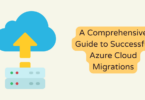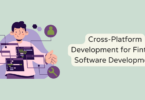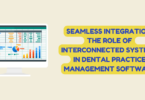
Digital transformation
In recent years, there have been many examples of how digitization has impacted almost every industry and forced companies to rethink their business models. But without a doubt, 2020 has been a watershed in the adoption of digital transformation in organizations.
Given the situation of the pandemic through which we have lived this year, many organizations were forced to an unforeseen adoption of tools that would allow the continuity of their businesses; tools for remote collaboration, monitoring productivity, and keeping sales afloat through electronic commerce or third parties that will support this, such as Rappi, Uber Eats, Mercado Libre, etc.
This gave a perspective, to those who had not started the digitization process, of how the processes and the behavior of the clients have been transformed in the last decade. As digitization continues to transform the business landscape, companies are facing multiple challenges, including the need to move faster, be more agile, and adapt quickly to market demands.
How to start with the digital transformation in my organization?
In order to compete effectively in markets where digital change has become the norm, companies must drastically rethink their organizational models to allow for higher levels of collaboration and support work in a more interconnected way to drive greater empowerment. And they need an innovative value proposition to attract new talent and meet the professional demands of the younger workforce.
There are multiple options and many ways to provide IT capabilities and it doesn’t matter what platform you are on. The key is choosing the right platform for the customer’s particular situation. For many companies, a hybrid IT solution is the right approach; as companies can combine legacy IT with agile, software-defined cloud solutions and cost-saving consumption-based models, with security built-in from the start.
A key consideration in making these decisions is understanding how the organization will react and ultimately evolve to support this new model. The most common success factor is an organizational and cultural change to meet the demands of the new environment.
Here are some of the best practices for tackling organizational problems:
1. Establish a common framework and taxonomy
A critical best practice is to develop or use a framework that can be communicated to all contributors so that they all share the same understanding, focus, taxonomy, and goals. Developing a story that multiple teams can easily understand is essential.
2. Know the skills of your team
In order to assign the right people to the right tasks, you must have a clear understanding of the skills of each employee. An accurate stock of certified skills has proven to be of great value to companies. That said, a ” skill inventory ” is just the beginning. Modern IT environments designed to support digital transformation require multi-dimensional approaches to talent. Experience in one domain (for example, networking or storage) is no longer sufficient.
Moving fast requires people to be both in one or more technical domains, but also extensively trained in other domains that are relevant to their environment. In addition, these individuals need to have the communication and collaboration skills and traits that enable them to solve complex, multidimensional challenges in a fast-paced team.
3. Invest and commit to ongoing training
The digital evolution also requires collaborators to be more agile, move away from traditional thinking and take a broader view as IT evolves to be a business enabler rather than simply supporting the business. To support this evolution, and as discussed above under ‘skills’, IT staff need to be well versed in technology when dealing with ubiquitous platforms, understand multiple technologies and at the same time really need to understand the customer’s business in order to develop the solution that better meets customer needs, improves customer business results, and is more successful.
Moreover – in software development world a basic agile or scrum training is recommended to ensure the key principles of agile development and agile mindset are shared within the team.
4. Guide your teams through change
To help ensure the success of digital transformation, people must be informed, supported to be ready to take on new tasks and opportunities. The educational services including technical training and management change prepare people actively and help them through the transformation to adapt and use new technologies and deal with the complexities inherent.
5. Share a common purpose and values
Organizations that want to attract millennials need to have a clear vision and purpose. According to experts at the London Business School, today’s talent is drawn to companies whose values match their own. This drives people to relentlessly innovate to find new ways to add value to customers’ technology, their businesses, their workplace, and their customers.
Now with the knowledge of these practices, it is time if you have not already done so, that you begin with your own transformation. Tell us what changes you have made in your organization starting this year.






